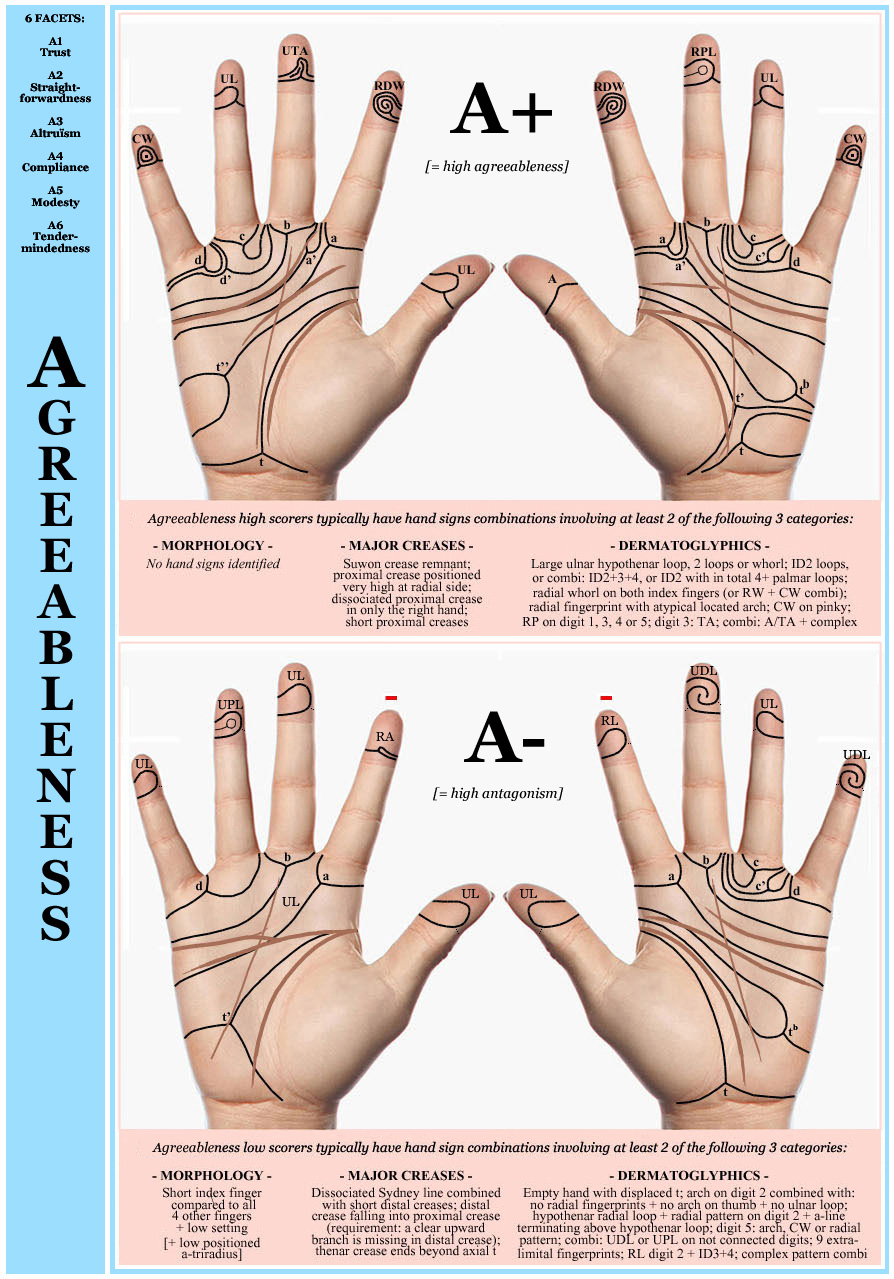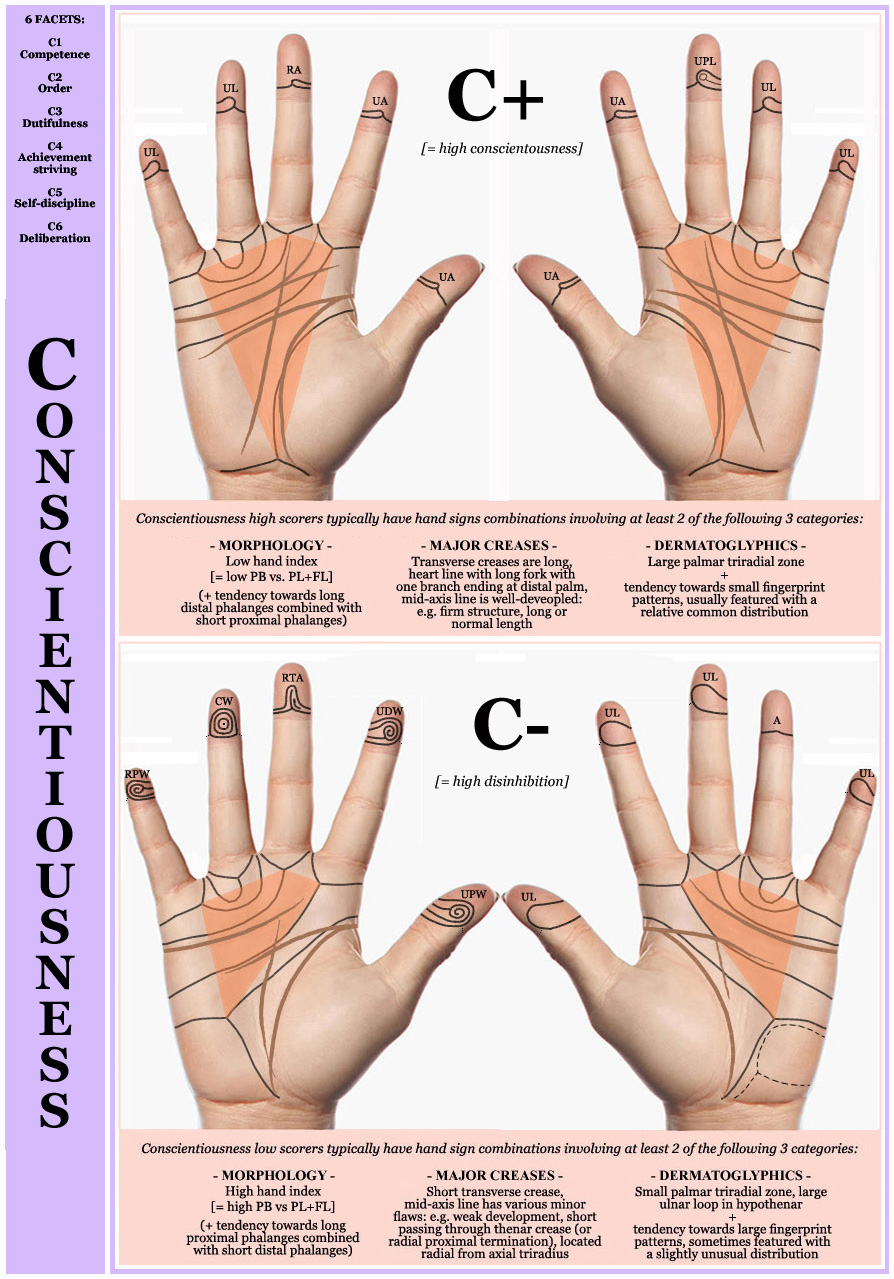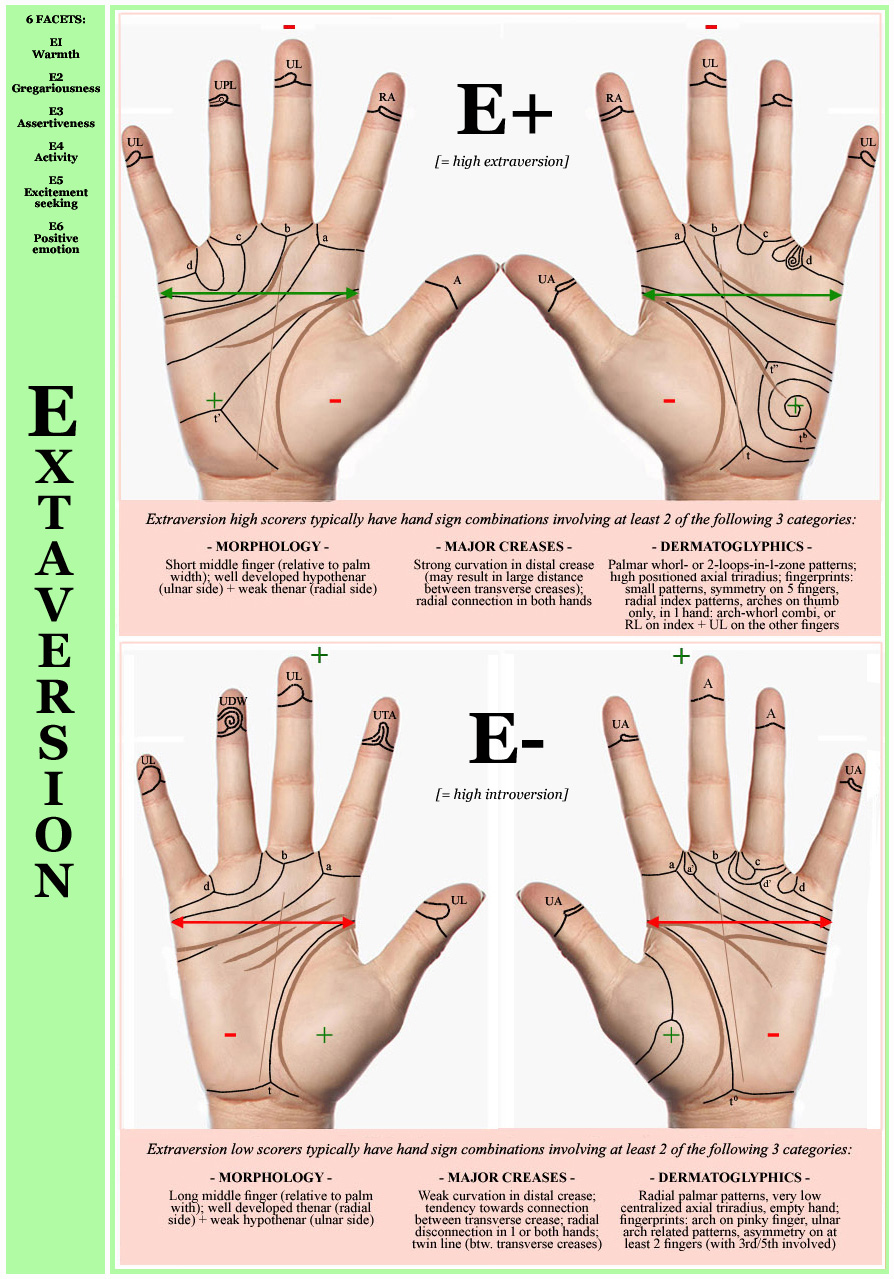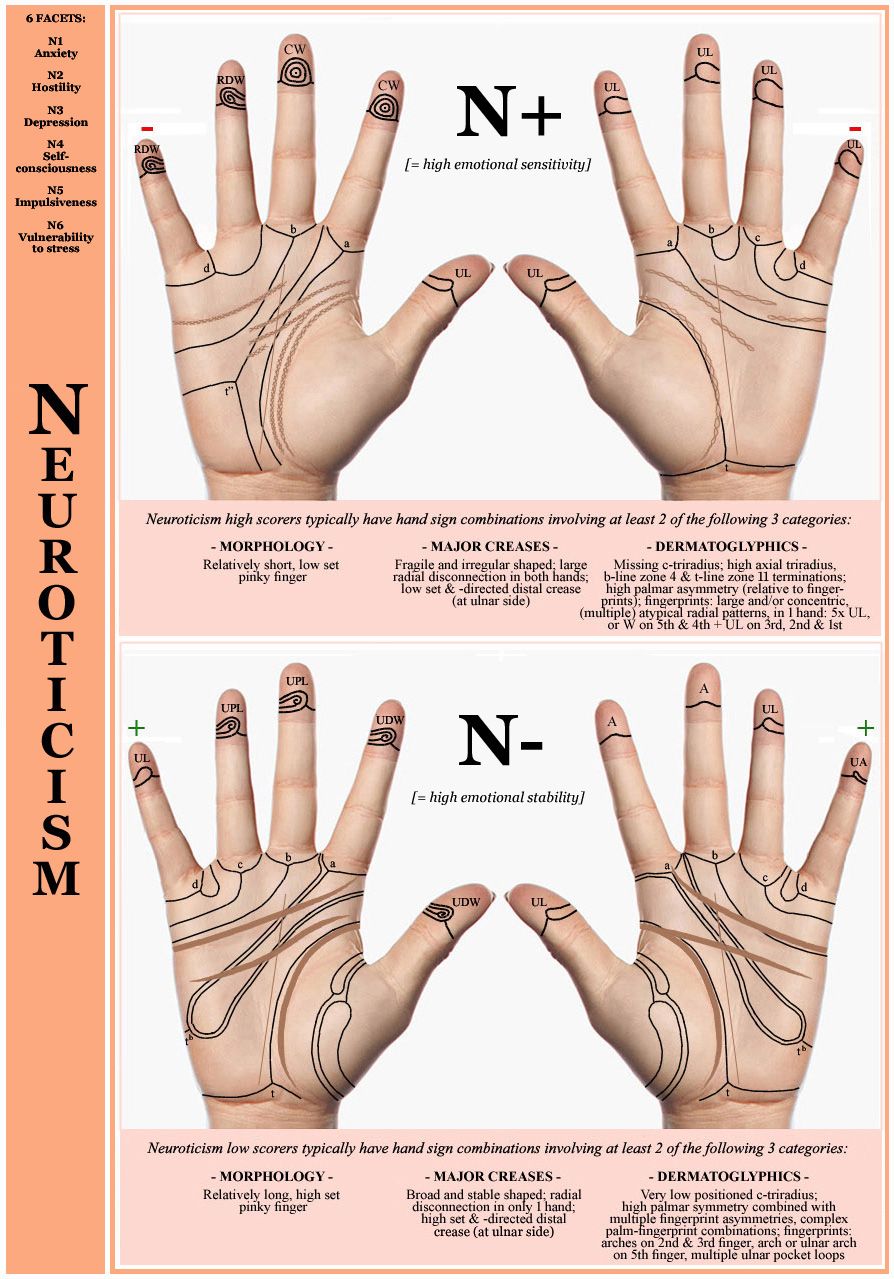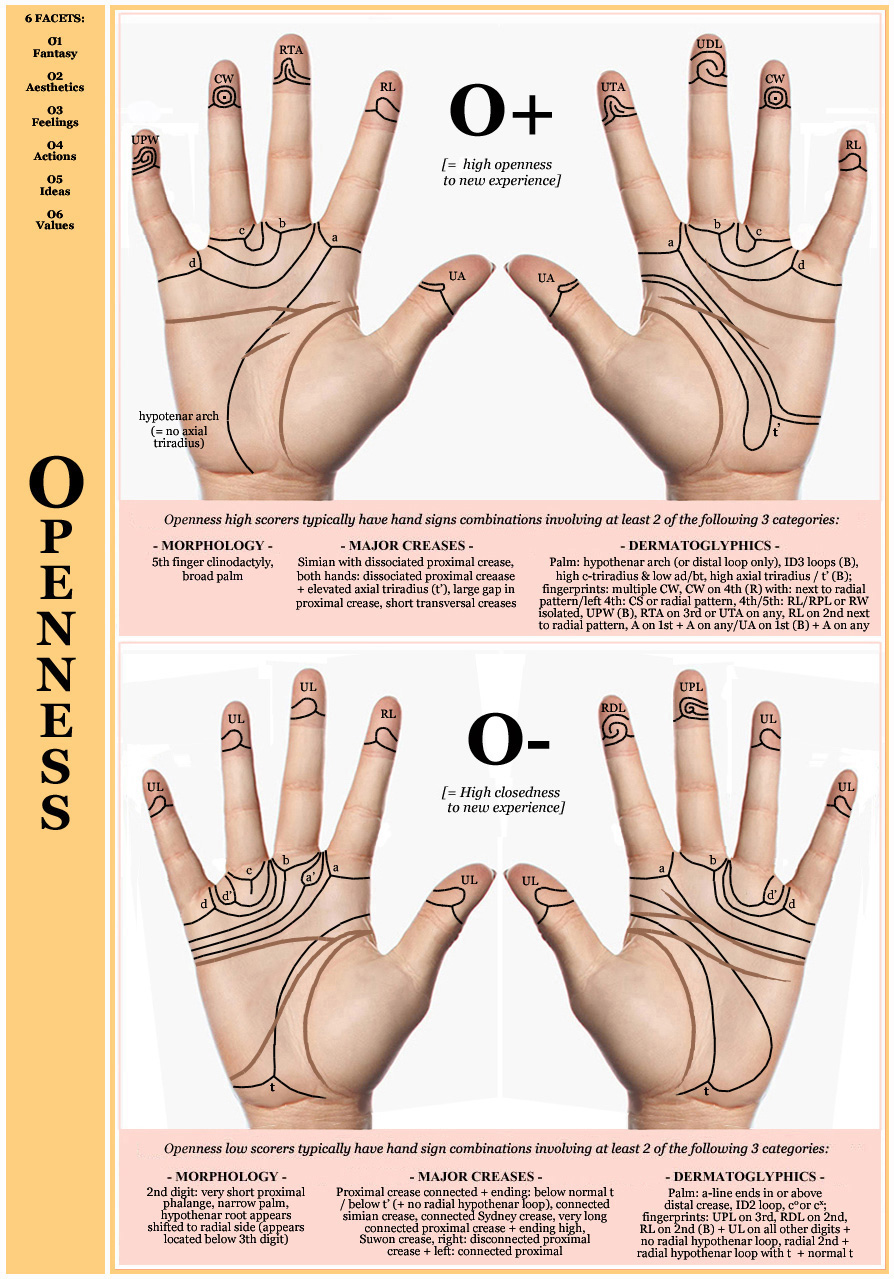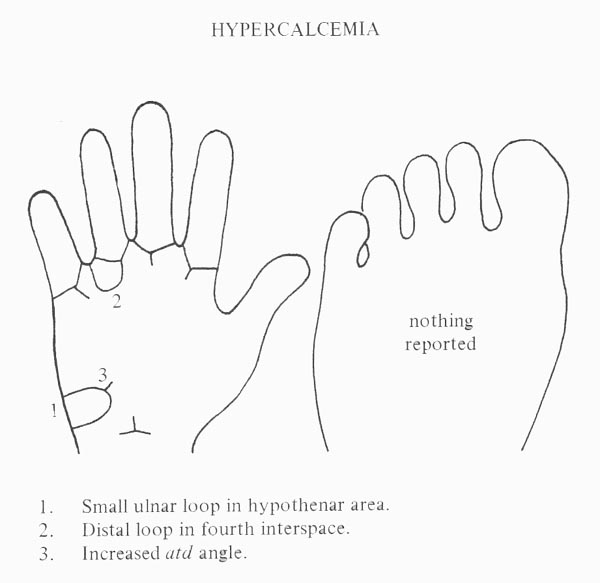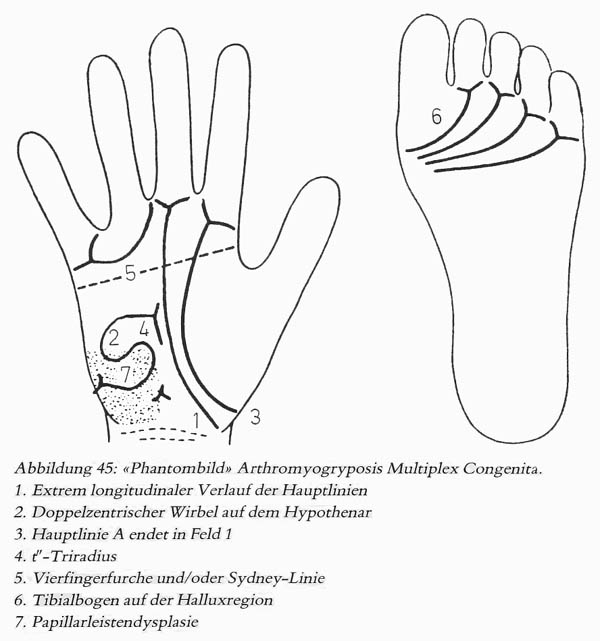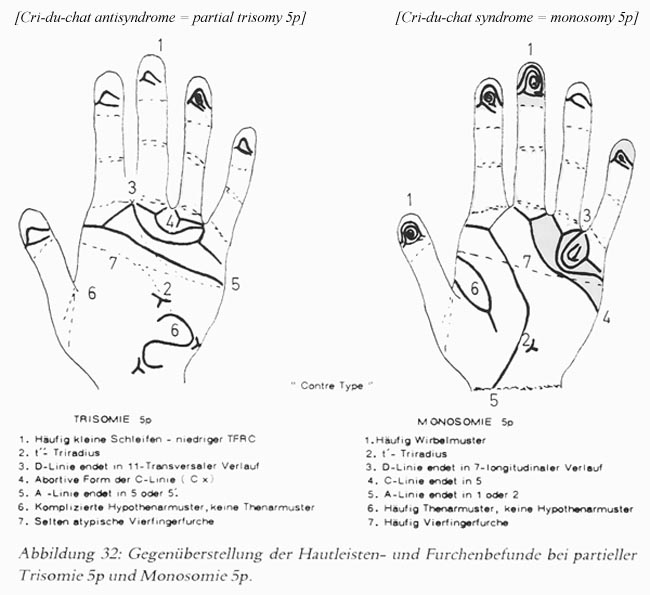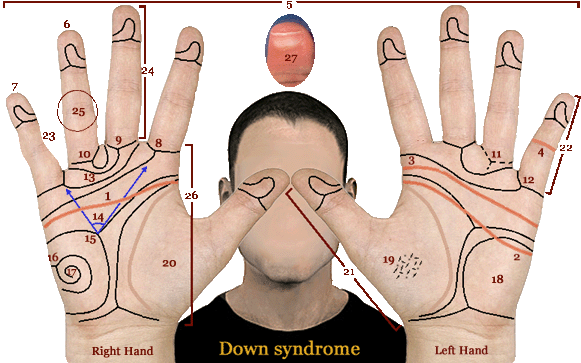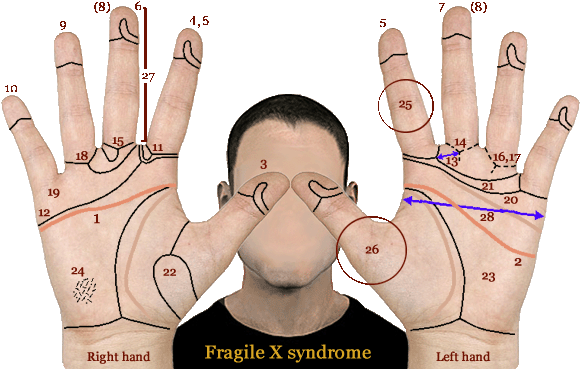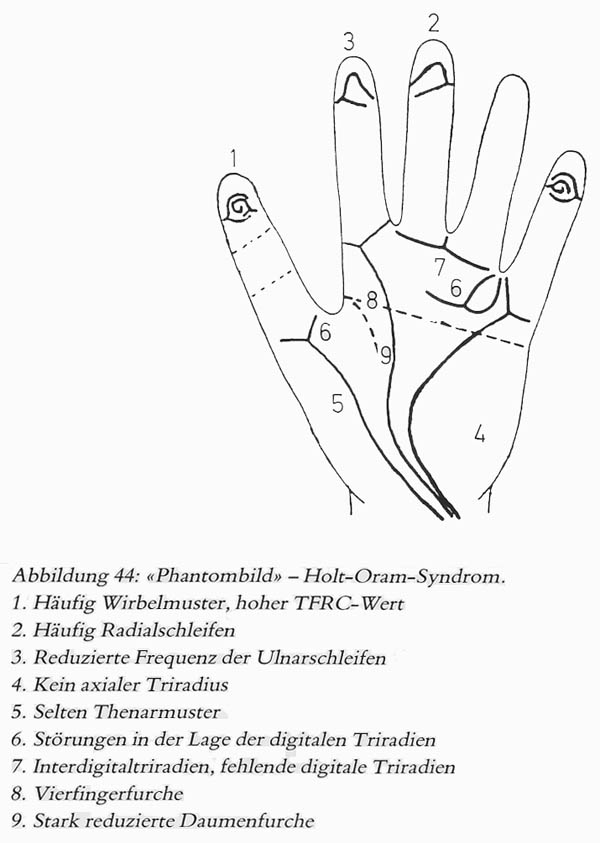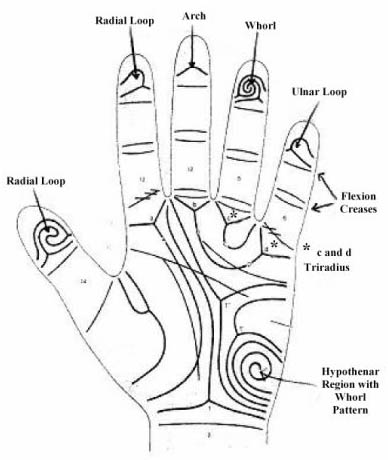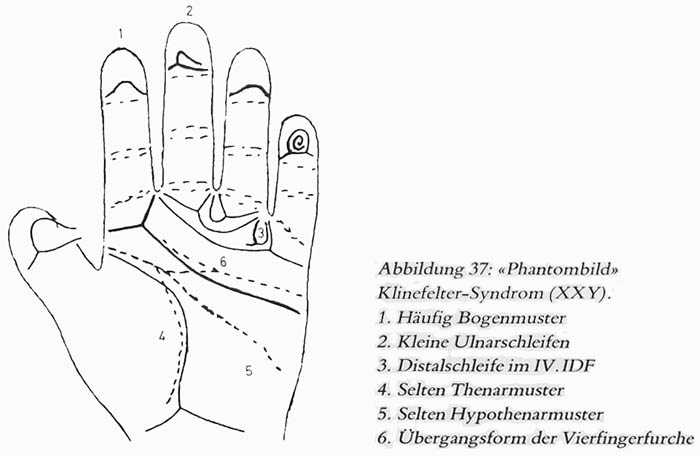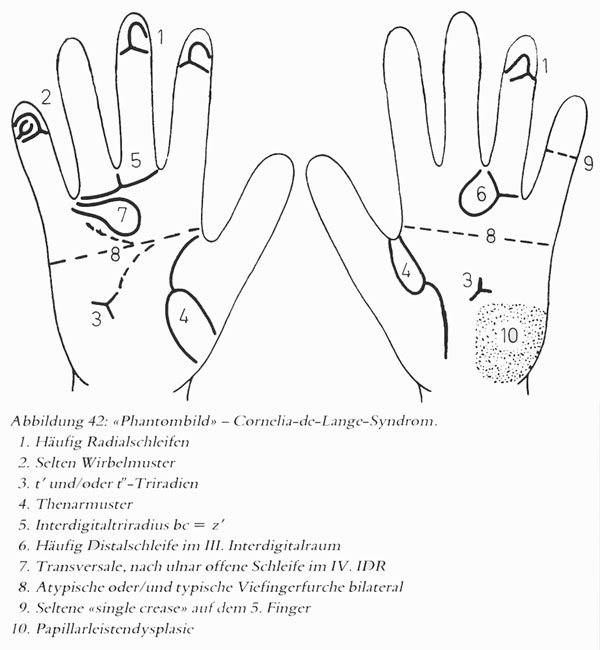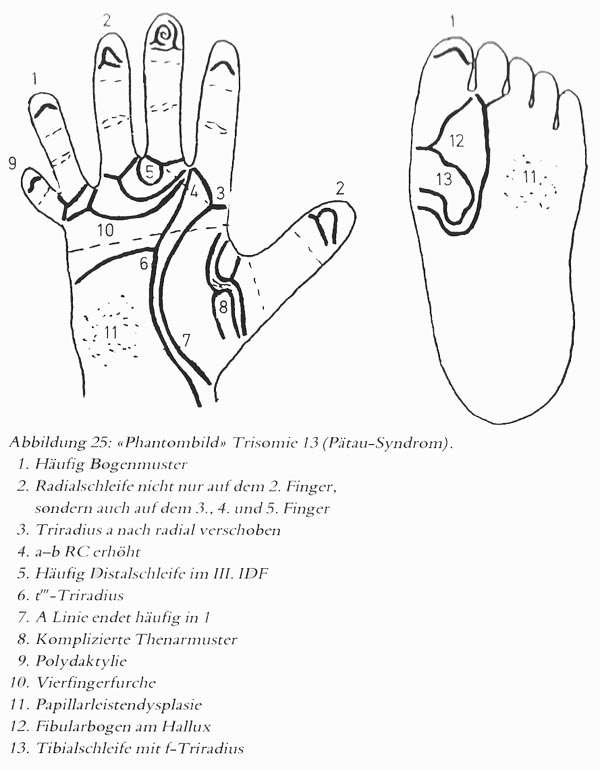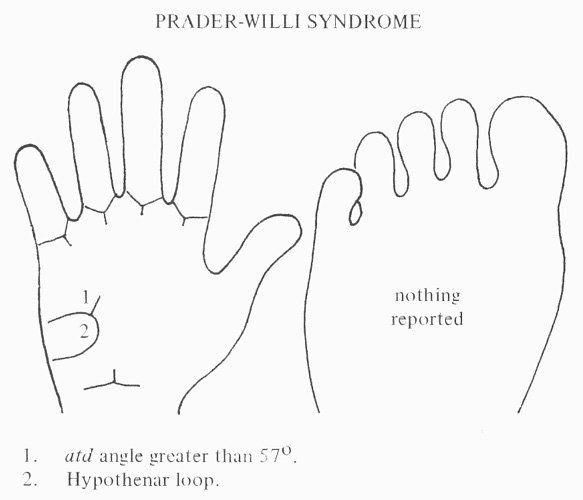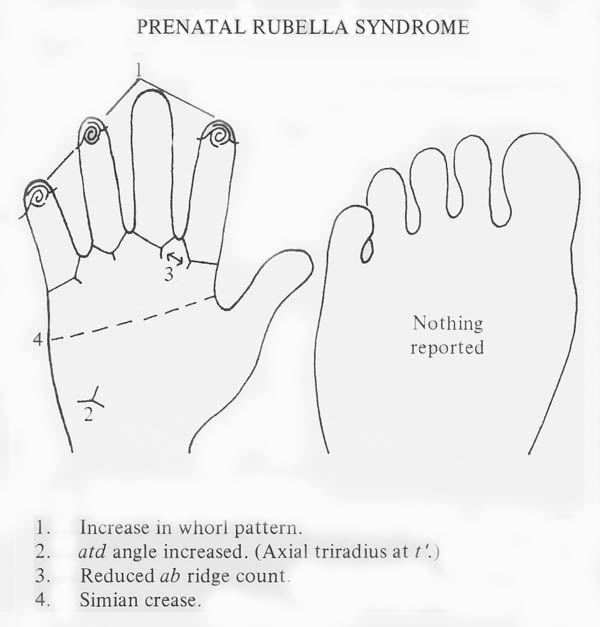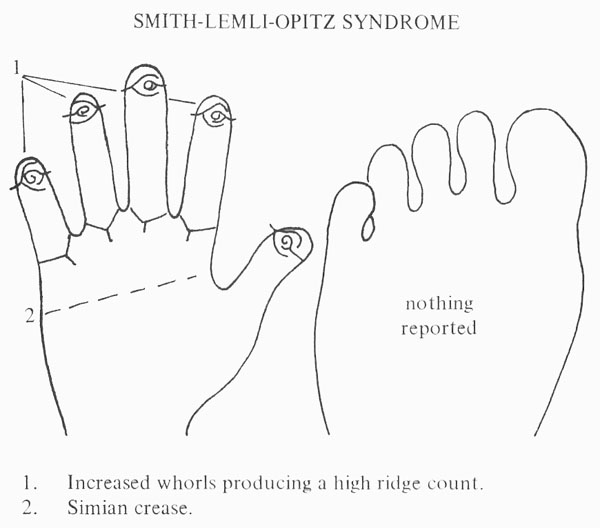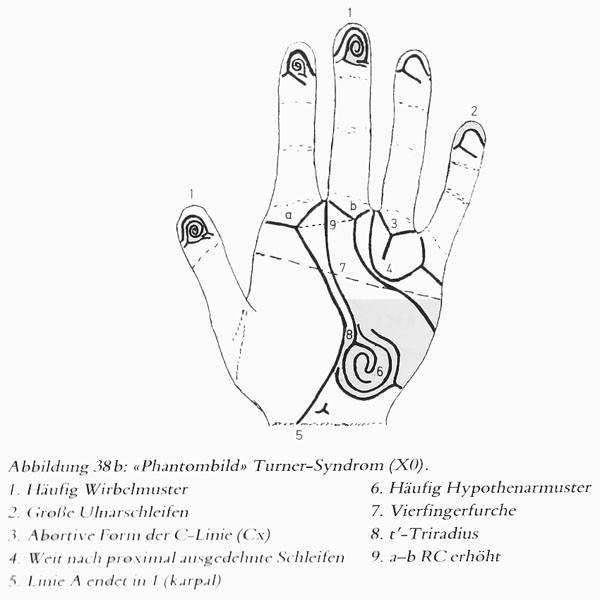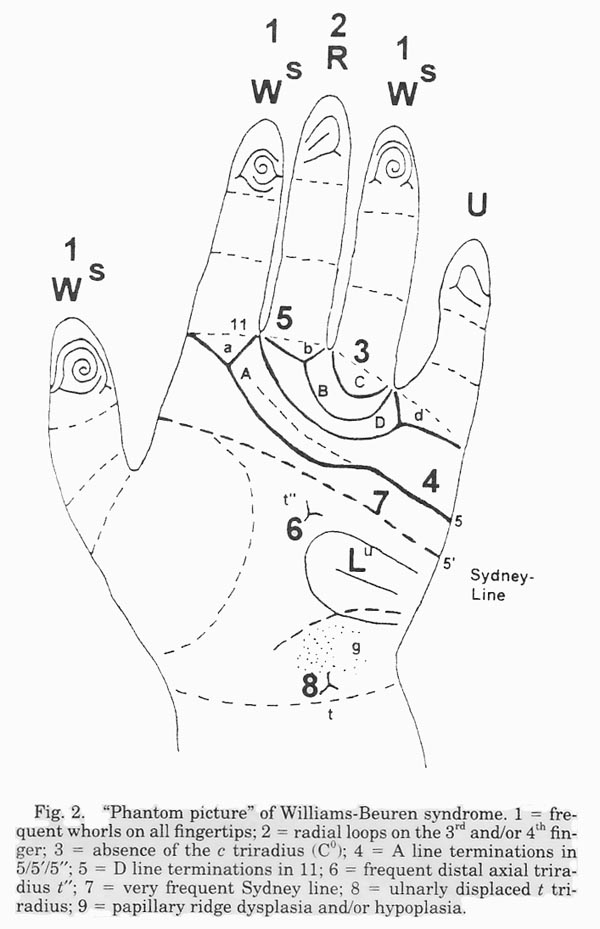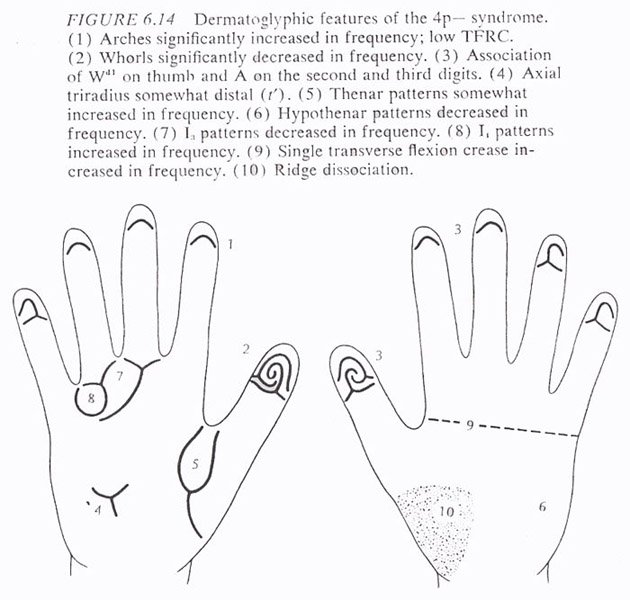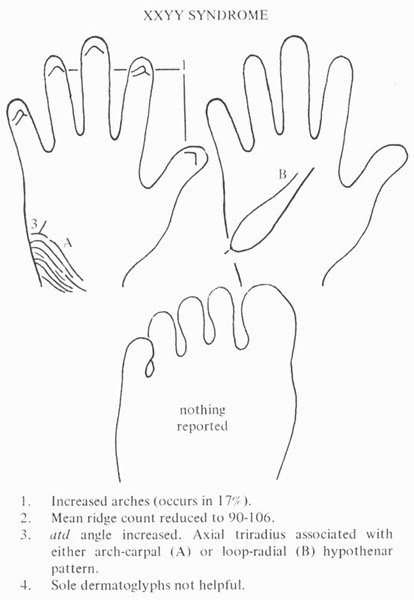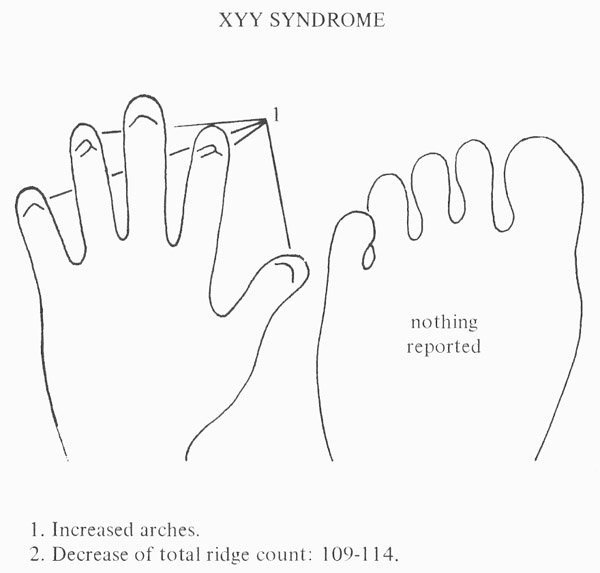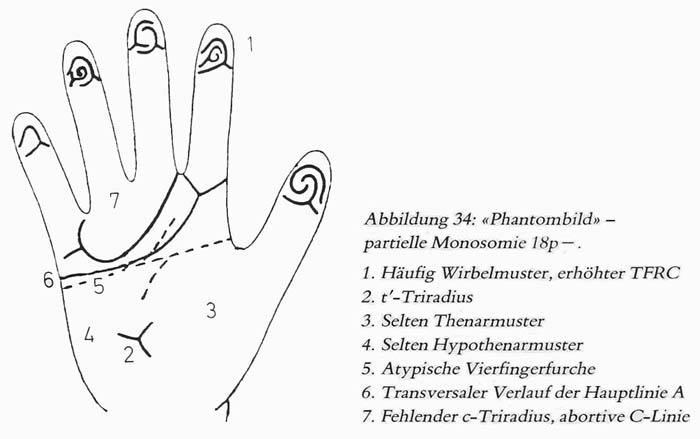
Scientific Hand Charts Collection:
Edwards syndrome, a.k.a. trsomy 18 / trisomy E!
3 Hand Charts for Edwards syndrome!
Edwards syndrome, also called trisomy 18 or trisomy E, is an chromosomal condition that causes severe birth defects in newborns; many babies born with trisomy 18 do not live past one month of age.
Prevalence: estimated at 1 in 6,000 live births.
Quite a few detailed hand charts are available for Edwards syndrome; most charts describe the significance of various typical features inside especially the dermatoglyphics, which manifest often combined with a simian line (= single transverse flexion crease) and/or a single interphalangeal crease on the pinky finger.
NOTICE: Individual hand features described below should not get associated in isolation with any theme; only combinations involving multiple hand levels have potential for diagnostic purposes.
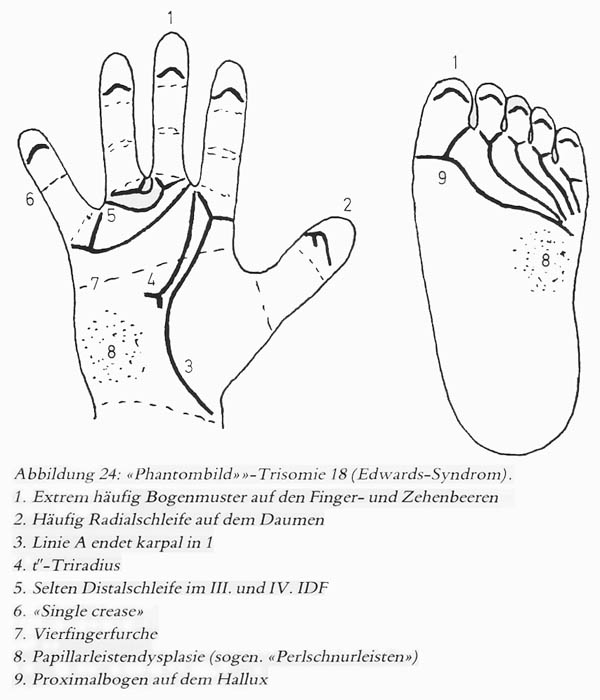
Hautleistenfibel (1981), p.61;
authors: A. Rodewald & H. Zankl
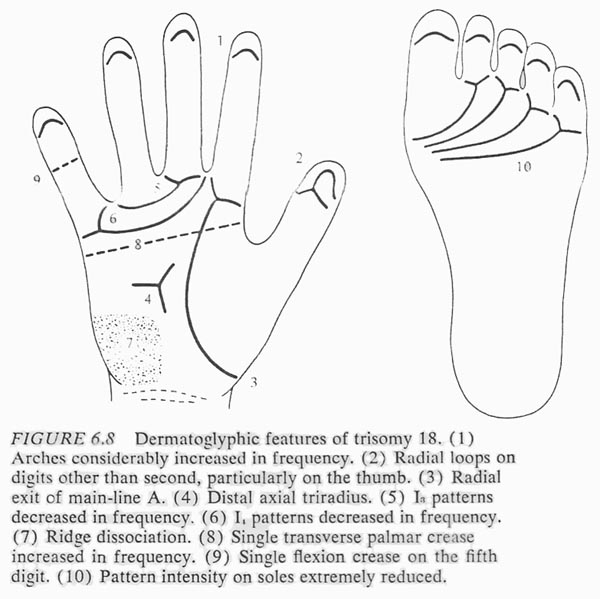
Dermatoglyphics in Medical Disorders (1976), p.164;
authors: B. Schaumann & M. Alter
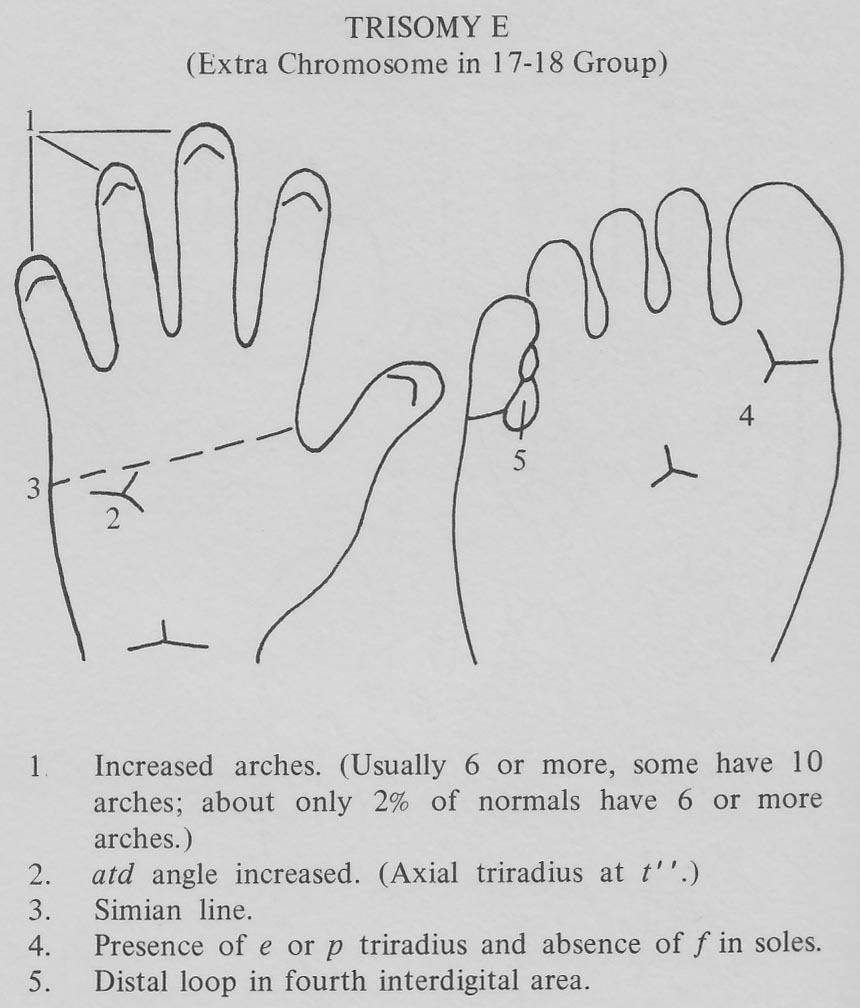
Handbook of Clinical Dermatoglyphs (1971), p.36;
authors: M.S. Elbualy & J.D. Schindeler
Other significant hand signs (not reported inside the hand charts):
A clenched hand with overlapping fingers (89%) is characteristically seen in Edwards syndrome; typically, the index finger is overlapping the third finger and the fifth finger is overlapping the fourth finger - see picture below (source: Wikipedia).
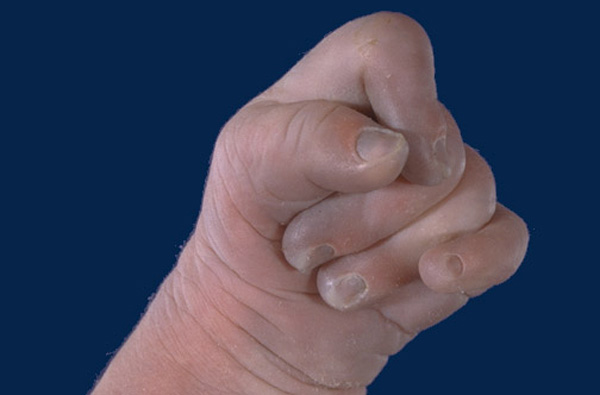
Distally implanted (52%), underdeveloped thumbs [= thumb hypoplasia] is another typical characteristic , and the thumb may even be missing completey [= thumb aplasia] (source: Corience.org). Retroflexible thumbs (25%) are also very common (source: A.I Taylor, 1968).
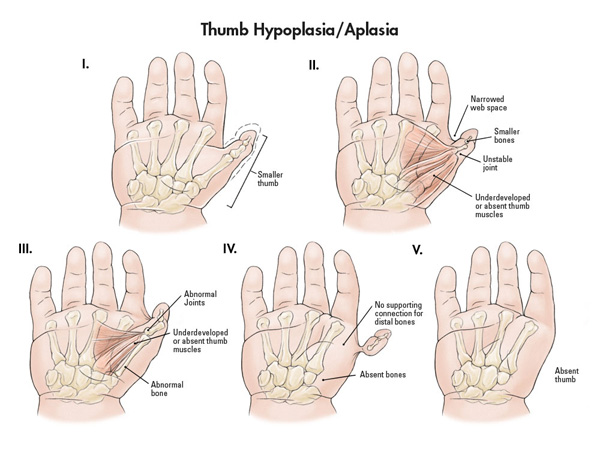
Underdevelopment of the nails [= hypoplastic nails] is also very common: 63%; long, hyperconvex nails are also relatively common: 17% (source: A.I Taylor, 1968).
All significant hand signs listed above for Edwards syndrome together cover five out of the nine perspectives of the hand as defined according Multi-Perspective Hand Reading (including hand level 2, 5, 7, 8 & 9).
A summary of the most significant hand sign combinations in Edwards syndrome is described here:
Decoding the language of the hand:
hand sign combinations in Edwards syndrome!
Hand charts are available for many other diagnostic issues;
start browsing HERE
![]() SCIENTIFIC HAND CHARTS: Introduction
SCIENTIFIC HAND CHARTS: Introduction
Hand charts for Big Five personality dimensions:
• Hand chart(s) for Agreeableness (2x: 1 in 4 people)
• Hand chart(s) for Conscientiousness (2x: 1 in 4 people)
• Hand chart(s) for Extraversion (2x: 1 in 4 people)
• Hand chart(s) Neuroticism (2x: 1 in 4 people)
• Hand chart(s) Openness (2x: 1 in 4 people)
Hand charts for diseases:
• Hand charts for hypercalcemia (1 in 4,000 people)
Hand charts for syndromes:
• Hand charts for arthrogryposis (1 in 10,000 people)
• Hand charts for cri-du-chat syndrome (1 in 30,000 people)
• Hand charts for Down syndrome (1 in 700 live births)
• Hand charts for Edwards syndrome (1 in 6,000 live births)
• Hand charts for fetal alcolhol syndrome (1 in 500 people)
• Hand charts for fragile-X syndrome (1 in 5,000 people)
• Hand charts for Holt-Oram syndrome (1 in 100,000 live b.)
• Hand charts for Kabuki syndrome (1 in 32,000 people)
• Hand charts for Klinefelter syndrome (1 in 1000 males)
• Hand charts for de Lange syndrome (1 in 15,000 live births)
• Hand charts for Marfan syndrome (1 in 5,000 people)
• Hand charts for Patau syndrome (1 in 15,000 live births)
• Hand charts for Prader-Willi syndrome (1 in 15,000 births)
• Hand charts for Rubella syndrome (1 in 100,000 people)
• Hand charts for Rubinstein syndrome (1 in 200,000 births)
• Hand charts for SLOS (1 in 40,000 births)
• Hand charts for Turner syndrome (1 in 2,000 female births)
• Hand charts for Warkany syndrome (1 in 200,000 births)
• Hand charts for Williams syndrome (1 in 14,000 births)
• Hand charts for Wolf-Hirschhorn syndrome (1 in 50,000 b.)
• Hand charts for XXYY syndrome (1 in 30,000 male births)
• Hand charts for XYY syndrome (1 in 1,000 male births)
• Hand charts for 18 deletion syndromes (2 in 40,000 live b.)
NOTICE: Reflexology hand charts are not included in this section because the scientific foundation of any of such charts is actually unknown; nevertheless, you can read more about the fundamentals of such charts HERE.
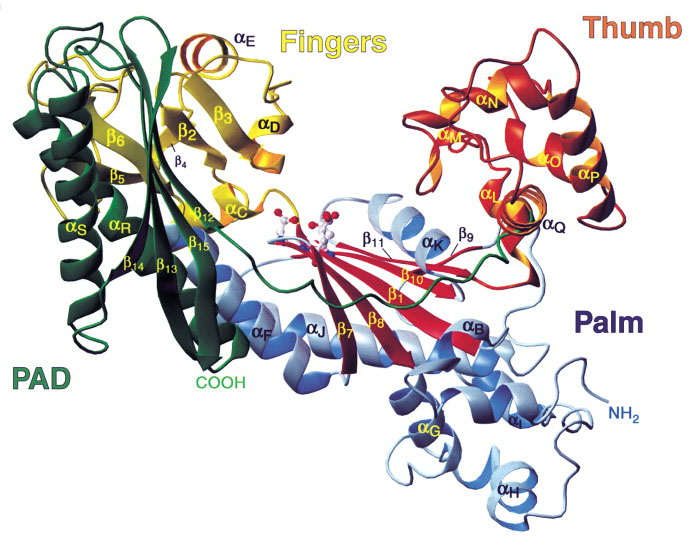
Other charts & maps:
• Fingerprints world map
• Hand reading experts world map
• Hand reflexology charts
